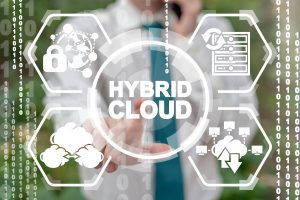Digital transformation for the digital generations

We look at how companies need to transform their businesses to cater for the digital generation and the tech that comes with them.
Click here to listen to ‘Digital transformation for the digital generations’ podcast now.
Millennials and Generation Z have either grown up with a lot of technology changes. These generations no longer see technology as a simple tool but as a given window to the world. Many companies have considered this when it comes to selling products. However, internally, their companies might not have digitally transformed enough for their younger generation employees.
A change in the way we work
The remote work trend was anticipated to be one of the leading trends in the future due to Generation Z’s “working environment invasion”; however, the pandemic sped this change up quickly for all generations. This change showed the massive differences amongst the generations. Younger generations made the work from home transition fairly easy. However, older generations struggled to deal with it. Younger millennials and all of Generation Z are more comfortable when it comes to making use of remote working tools and technology than any other previous generations. They can easily work a video, social media platform, the internet, messaging platforms and fix various technical issues on their devices or with their internet. These generations are highly desirable to add to your workforce, as little to no training will be needed, and they can hit the ground running while working remotely or in the office.
Now that companies worldwide are re-entering the physical workplace again, it is essential to ensure your company has digitally transformed to ensure new young employees who started during the pandemic stay with your company for many years to come.
Tony Raval, member of the Forbes Technology Council has said that “with Gen Z’ers and millennials, there is no stopping the digital revolution. Creating digital initiatives and strategies that continue to advance as the needs of Gen Zers and millennials swell can ensure no matter what sector of business you are in, your business will continue to grow in line with the different needs, mindsets, and preferences of this demographic.”
Companies need to keep this in mind when it comes to any decision they make, especially when looking to digitally transform the company. Some research done by Verdict has shown the top digital transformation technologies that Generation Z workers want include: business intelligence, IoT, robotic process automation and AI. So, these technologies are not a bad place to start when digitally transforming your company which is why we will break these down for you.
Business Intelligence technology
First up we will look at Business Intelligence technology. Mary K. Pratt and Josh Fruhlinger have said that Business intelligence leverages software and services to transform data into actionable insights that inform an organization’s strategic and tactical business decisions. BI tools access and analyze data sets and present analytical findings in reports, summaries, dashboards, graphs, charts and maps to provide users with detailed intelligence about the state of the business.
The term business intelligence often refers to a range of tools that provide quick, easy-to-digest access to insights about an organization’s current state based on available data. By implementing this technology, companies give their employees a way to read and understand data. They will understand the various trends and insights amongst the data, which allows them to make informed decisions to improve the business.
IoT
The next type of technology Generation Z and younger millennials want to use is the internet of things. Most of them have smart homes with smart lighting, thermostats, security items and even fridges and washing machines. These generations would like to see offices and companies embracing IoT to improve businesses. IoT can help companies to increase efficiency and productivity, inventory tracking and management, data sharing, remote working and creating new consumer demands. IoT also changes the way consumers purchase products as the buying experience has become shorter and more enjoyable.
RPA
Gen Z is the most open generation to working along with robotic systems, bringing us to the next technology that Gen Z workers want to use. Robotic Process Automation has been described as a quick and easy way to restructure crucial procedures, often extending the life of older systems. As stated by Clint Boulton, Senior Writer on CIO, with Robotic Process Automation, businesses can automate mundane rules-based business processes, enabling business users to devote more time to serving customers or other higher-value work. Others see RPA as a stopgap en route to intelligent automation via machine learning and artificial intelligence tools, trained to make judgments about future outputs.
AI
The final technology that Generation Z wants to use is the use of artificial intelligence. With most of this generation still in school or university, AI in studies is almost expected. GenZ Identity Lab has said that activities must be rooted in what students already know to encourage learning. Meeting the needs of Generation Z makes a strong case for expanding AI into the classroom. We crave and thrive in technology-enhanced learning mechanisms. AI meets students in the culture they know: a technology and information-rich culture. Gen Z wants to see technology adapted into the classroom. They prefer more self-directed or independent learning. Initially, AI can support establishing student learning goals and objectives by developing individualized learning strategies. The use of an “AI tutor” can gauge progress and modify content and activities based on individual progress.
And from this, businesses need to start looking at implementing AI into their companies to ensure that when these Gen Zers enter the market, they can use this technology straight away. Various departments within your company can use AI, such as marketing, sales, research and development, IT operations, HR, contact centres, customer experiences, accounting, and finances. These departments will no longer need to worry about repetitive tasks that can now be done through AI programmes.
READ MORE:
- The importance of digital transformation within e-commerce
- Upskilling your people for digital transformation
- Britannic Technologies deconstructs digital transformation
- Digital transformation for deskless workers
While transforming your business digitally is essential, businesses also need to think about other factors that need to be transformed to keep Gen Z and the millennials happy. Flexible working hours, a balanced work-life balance and the opportunity to travel while working has become an important aspect to Gen Zers when they are looking for jobs. Companies need to find a way to be more flexible and willing to understand the needs of their employees.
Click here to discover more of our podcasts now
For more news from Top Business Tech, don’t forget to subscribe to our daily bulletin!
